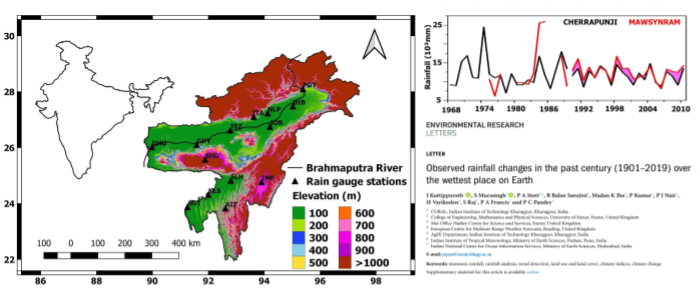
Climate Change Signals from North-Eastern India, the Wettest Place on Earth
In a recent study, researchers from IIT Kharagpur have observed a significant change in the rainfall in the northeast in general and specifically at the wettest place on Earth, Cherrapunji-Mawsynram. The researchers observed rainfall changes in the past century (1901–2019) over the wettest place on the Earth and unveiled the first evidence for the signals of climate change and anthropogenic influence on rainfall changes in the region. The analysis of 119 years of rainfall data at 17 stations in Northeast India revealed that most of the stations show negative trends in rainfall, the highest in the summer monsoon and the…
